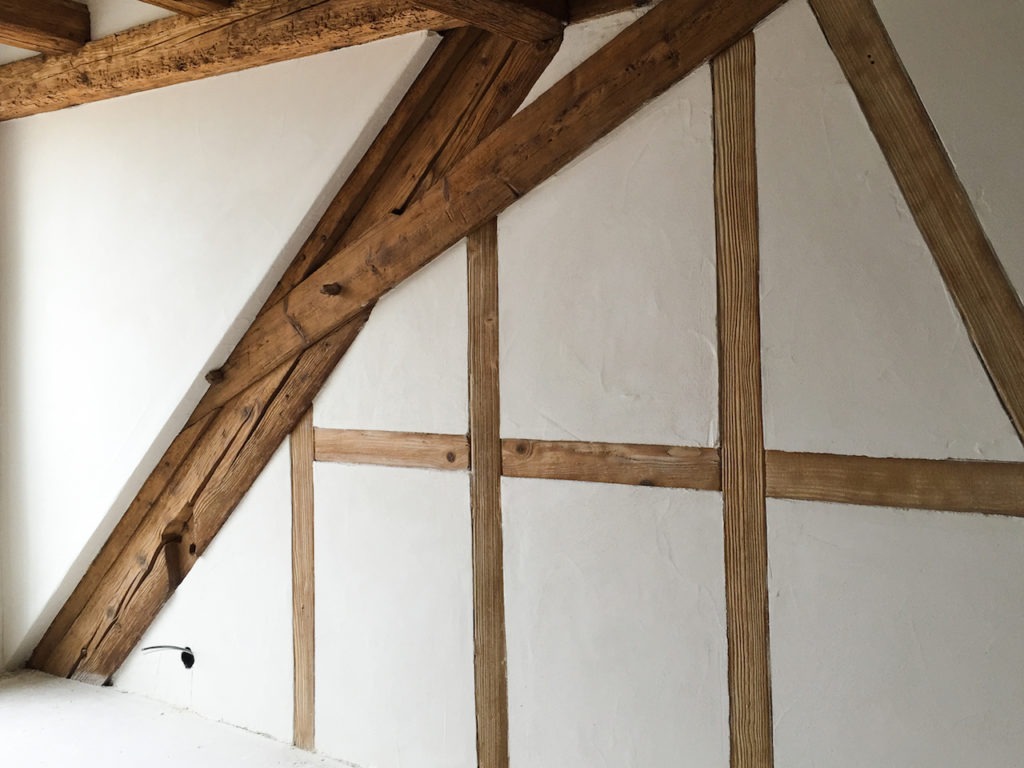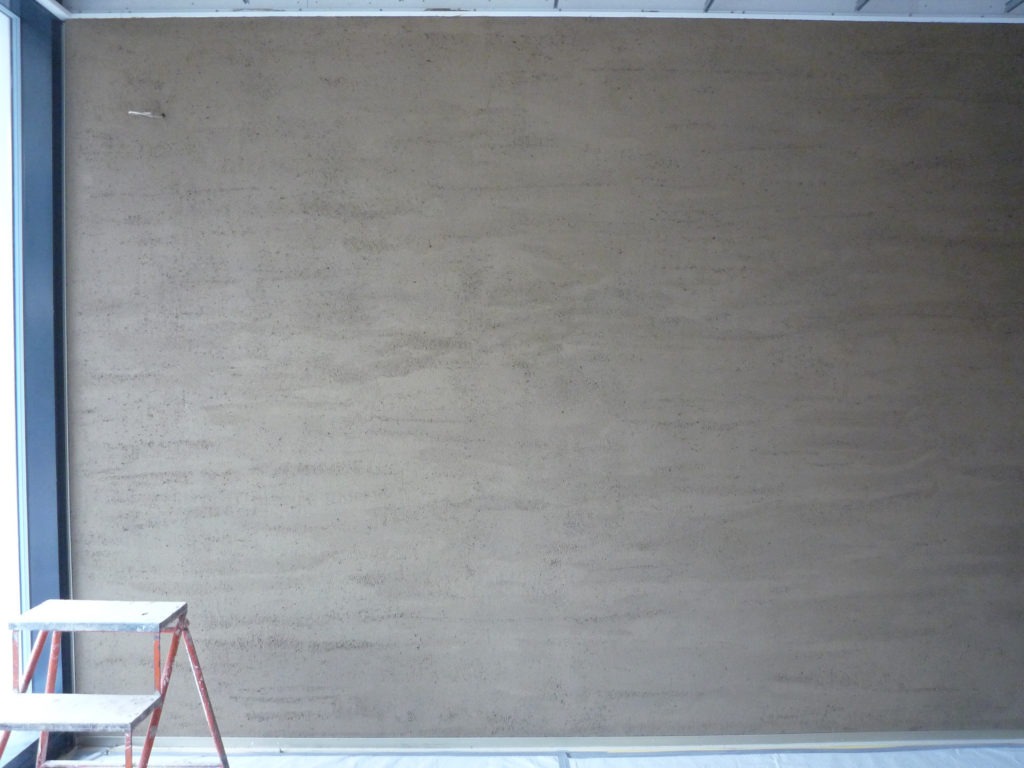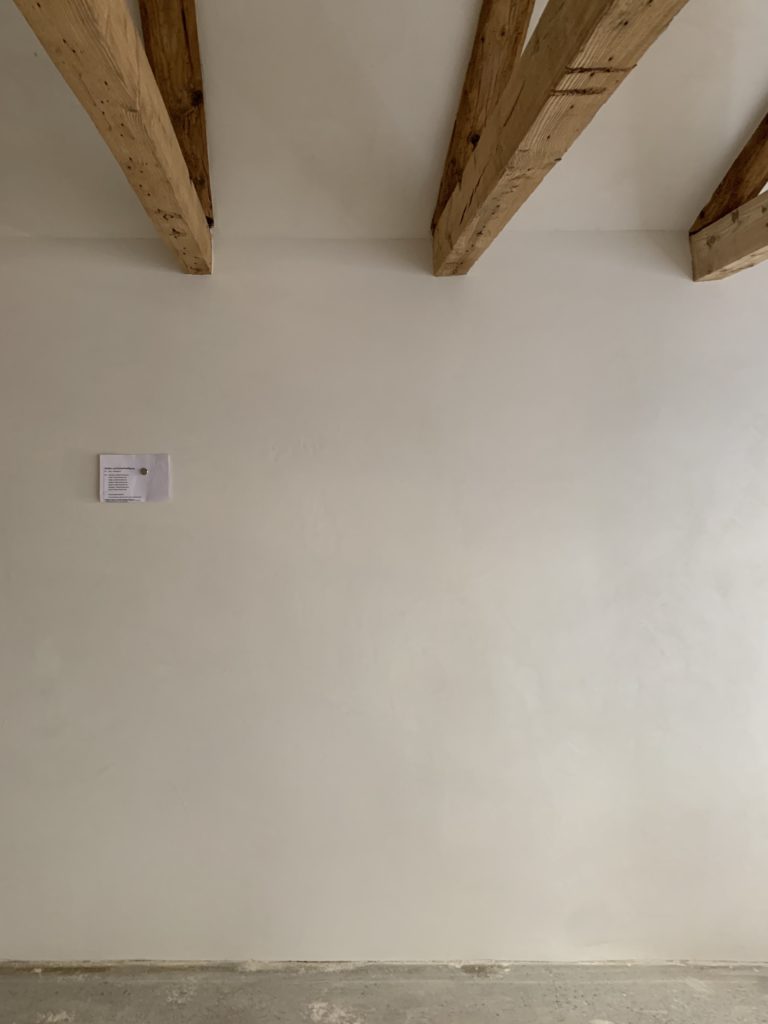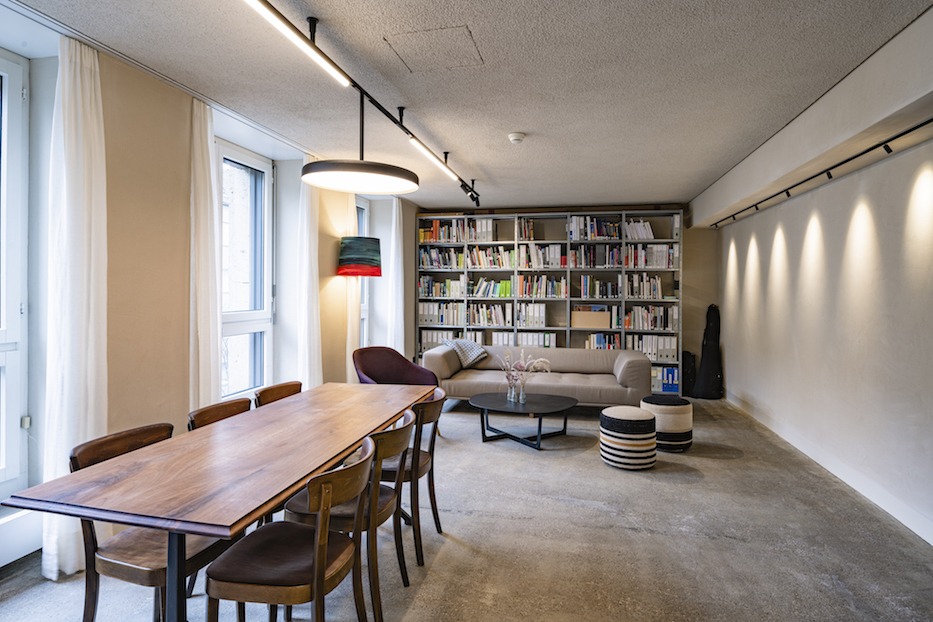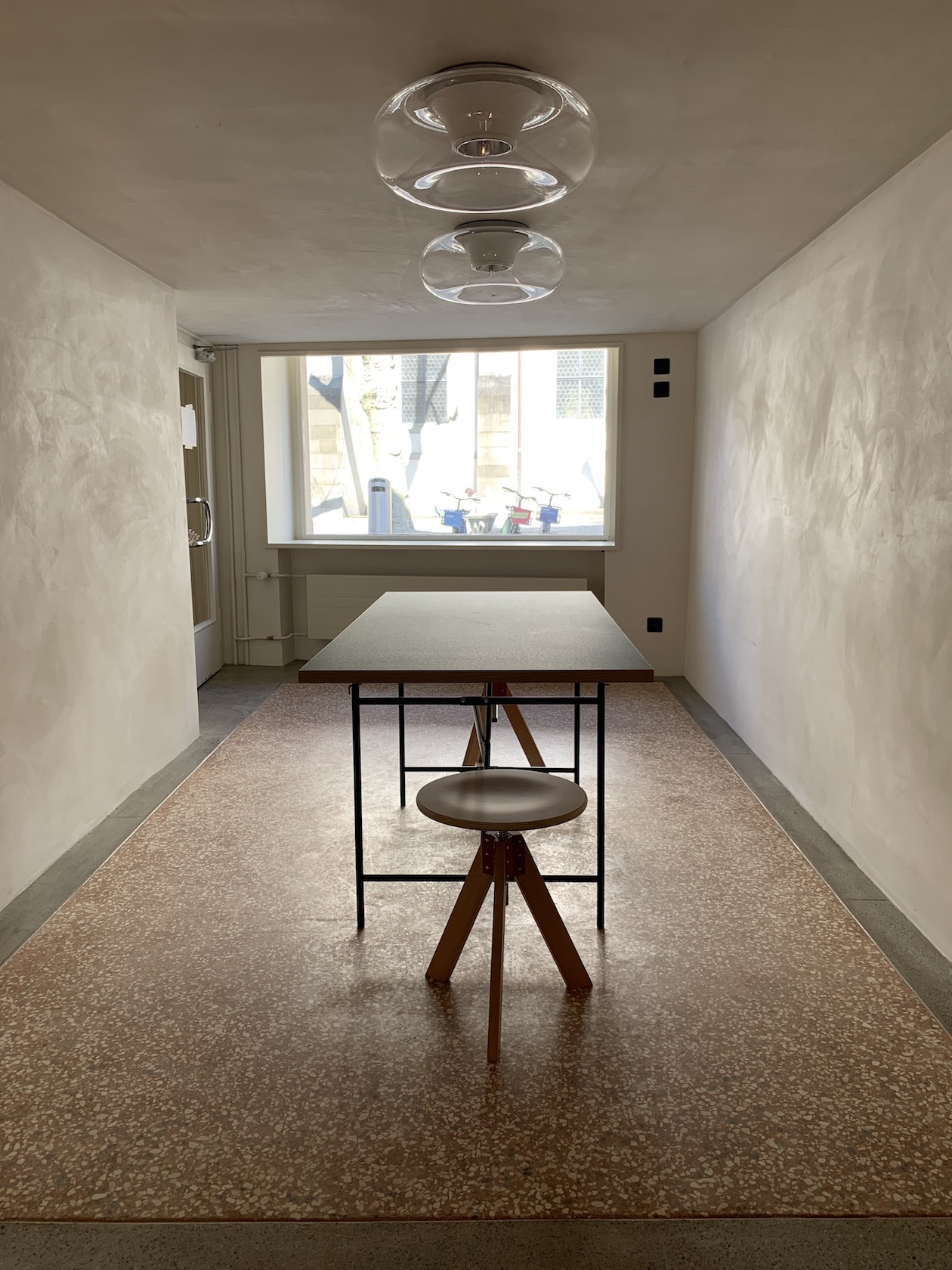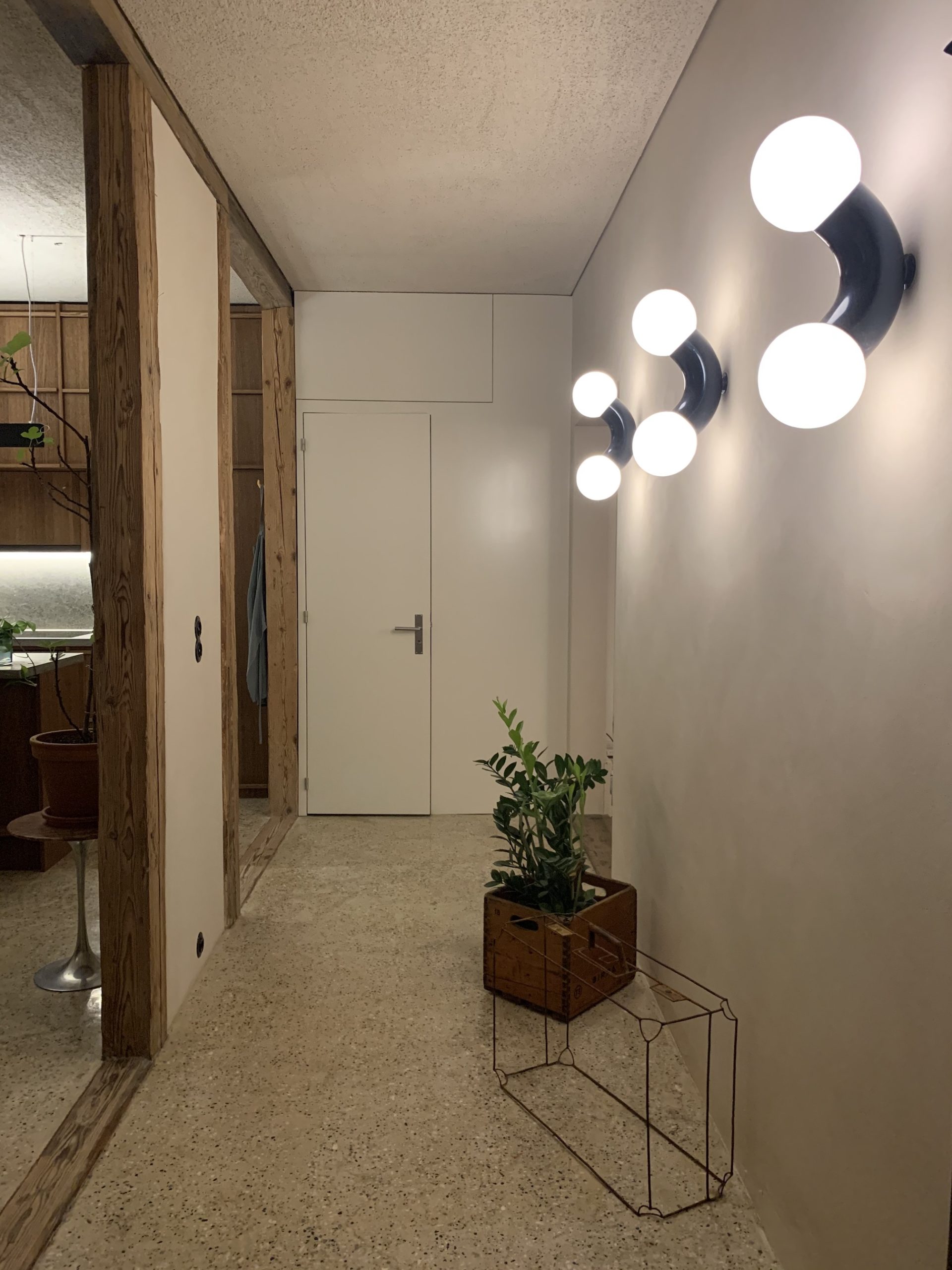Clay, silt and sand are prepared moist, plastic to a mixture for wall or ceiling plaster.
DEVELOPMENT: Loam is a mixture of clay, sand, silt (very fine sand) and, under certain circumstances, stones. It is mainly formed by weathering, erosion and sedimentation of rocks. Clay is therefore available almost everywhere in the world in different colours and compositions.
HISTORY: Along with wood and stones, clay is one of the oldest building materials of mankind. Even today, more than a third of the world's population lives in buildings that were built partly or entirely of clay, using various techniques. Even in Central Europe, centuries-old buildings still consist of clay, although the building material was mostly used by poorer societies and almost completely displaced with the advent of cement and lime.
Photos: Philip Heckhausen


Processing: clay plaster
PROCESSING: Clay, silt and sand are prepared to form moist clay plasters, which are applied to walls and ceilings both as a coarser base plaster or a finer finishing plaster. If necessary, natural aggregates (straw, flax, etc.) are added as reinforcement. The finishing touch is the plastering of the surface while regulating the humidity.
PROPERTY:
- Can be used inside and outside, as base and finishing plaster for walls and ceilings
- Well combinable with wall heating systems and other materials
- Natural ecological alternative - Low grey energy demand
- Diffusion open and thus absorption and release of moisture
- Generates a pleasant indoor climate (absorbs odours and toxins)
One of LEHMAG AG's own developments is the magnetic clay plaster structure. Here the surface becomes magnetic and so pictures or planning documents can be hung up.
